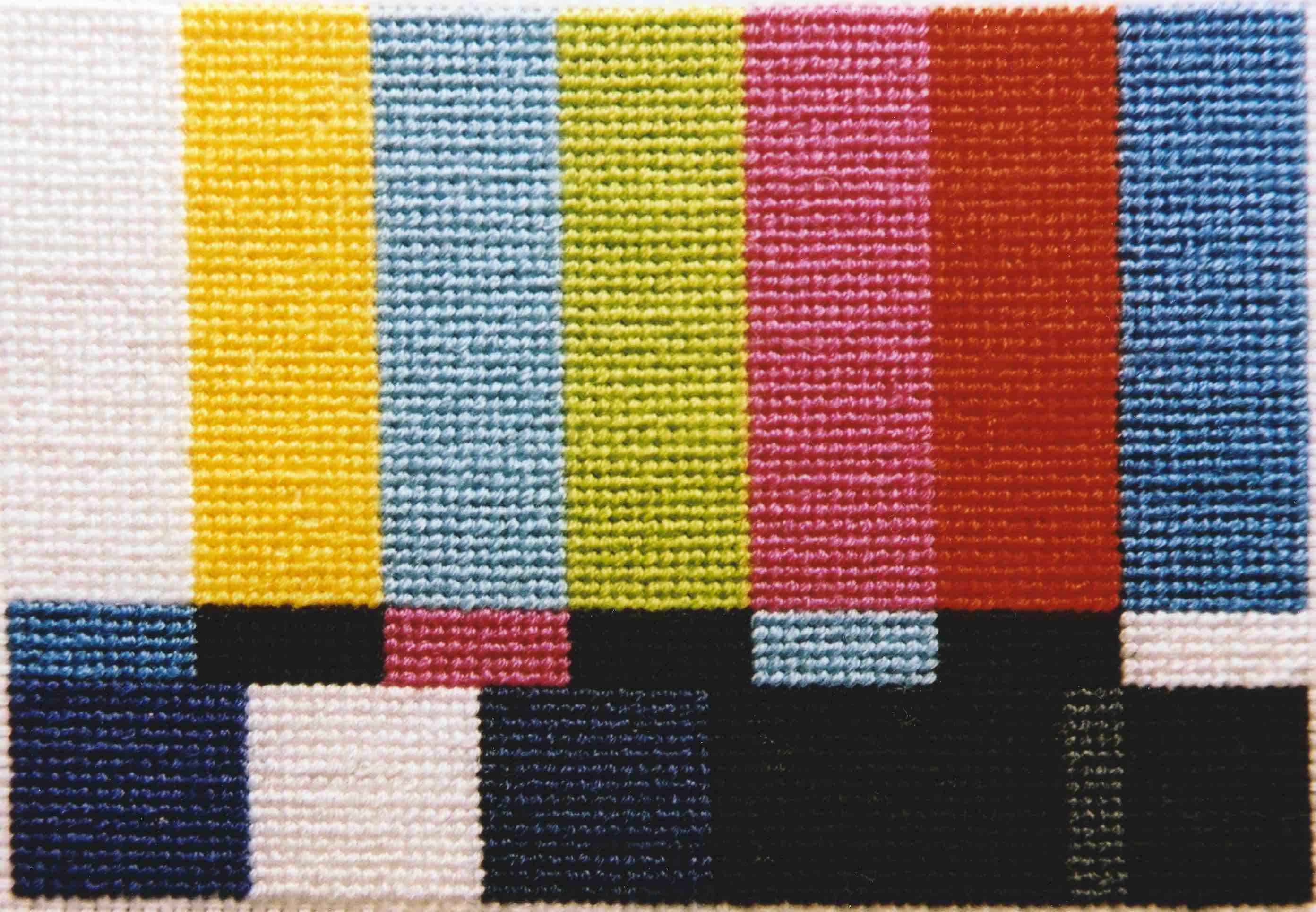Saturday March 4, 7:30 Doors/ 8 pm Screening
$8/ $5 members + students
@ CineCycle, 129 Spadina Avenue
Part of Winter 2017
Electronic Weavings is a selection of videos made by Québécoise artist Nathalie Bujold. The artist describes her practice as “l’esprit pratique: au service de la pratique de l’esprit” (roughly, the practical spirit: at the service of the practice of the spirit). Her works are evocative of Norman McLaren’s playful spirit, engaging with both experimental aesthetics and innovative techniques. Moreover, the works often engages with domestic spaces and with contemporary craft practices.
The program begins with Emporium (1999), a performance video which attempts to re-imagine how the female body interacts with the domestic space of the kitchen. Despite the playful nature of the work, the work is quite political. For instance, in the privacy of her kitchen, Bujold demonstrates the ambivalence of the Québécois towards the sovereignty movement through the clever use of hand gestures. Moreover, the work deconstructs and challenges traditional notions of gendered housework. For example, in one section, Bujold implicitly observes a paradox within traditional gender roles: If a woman is always expected to conform to traditional conventions of beauty, how is it possible to do the dishes? Despite taking place in a private space, the sounds of the radio remain omnipresent, potentially suggesting the kitchen’s connection to the outside world.
In Textile de Cordes (2013), Les trains où vont les choses (2006), Merci (2014) and her most sophisticated video work to date Jeux de cordes (2016), Bujold transforms the screen into a densely-layered weave. By treating the video as an electronic thread, the works radically re-image the screen space. For instance in Jeux de cordes, chamber musicians from the Bozzini Quartet are multiplied to produce a moving graphical image that seems to recede into the distance. In other words, through these works Bujold is seemingly expanding the screen space. In addition to expanding the screen space, Les trains où vont les choses (a video shot from the window of a train moving through Lebanon and whose title is a play on the French idiom “Au train où vont les choses” which playfully confounds rhythm and train, and which roughly translates as “the way things go”) condenses time while visually exploring a concept similar to resonant frequency. Finally, by converting traditional needlework into video techniques, her work can be seen as a form of digital materialism and as contemporary craft.
Many of these works can also be read as contemporary examples of visual music. Unlike more traditional forms of visual music (eg. the films of Mary Ellen Bute, Oskar Fischinger, Jordan Belson, Norman McLaren, etc.), Bujold’s work engages with contemporary forms of musique expérimentale like contemporary classical music and musique concrète. Moreover, her work often re-imagines classical instruments and instrumentation and are often made in collaboration with contemporary musicians. For instance, Jeux de cordes was made in collaboration with the Bozzini Quartet and composer Taylor Brook, who also composed the incredible soundtrack for Les trains où vont les choses. In addition, in Hit (2015) Bujold collaborated with Voivod drummer Michel “Away” Langevin to re-imagine how a drummer might interact with their drum set within a digital environment.
The program ends with All the Good Things (we could have done) (2007). In contrast to visual music, this is an anti-music-video. The video returns us, once again, to the kitchen where we are invited to hang-out out with ants while listening to the lo-fi musical renderings of a bass and vocal duo consisting of Bujold and Gerard Leckey.
Program:
Emporium (11 minutes, 1999)
Textile de Cordes (2 minutes, 2013)
Les trains où vont les choses (9 minutes, 2006)
Merci (1 minute, 2014)
Hit (Excerpt) (2 minutes, 2015)
Jeux de cordes (20 minutes, 2016)
All the Good Things (we could have done) (5 minutes, 2007)
BIO:
Nathalie Bujold joined the Oeil de Poisson artist center in 1985. After a few years with the collective, she began her studies in fine arts. In 1992, she completed a Bachelor’s degree at Université Laval and won the Prix René-Richard. Her work on moving images began in 1989 with a few short super 8 films including Simple, rapide et délicieux and Le Sheik Brun acquired by the Cinémathèque de l’Université Laval. Some fifteen videos followed, including Les trains où vont les choses which earned her the Prix à la création artistique du CALQ in 2008 and Emporium which was included as part of the prestigious Magnetic North: Canadian Experimental Video. Les trains où vont les choses was selected by three composers at the 2010 NEM Forum, generating three pieces of original music for the work, including a composition by Taylor Brook. Bujold further collaborated with Brook to create Musique de chambre (noire) (with improvisations by The Bozzini Quartet) which was presented at La Cinémathèque québécoise for the Akousma Festival in 2015. This collaboration further resulted in a three-channel video installation called Études vidéographiques pour instruments à cordes presented for the FIFA at La Cinémathèque québécoise, the Festival International de musique de Victoriaville (FIMAV) and at l’Oeil de Poisson. She recently completed her master’s degree from l’Université du Québec à Montréal (UQAM) and in November 2016, Vidéochroniques (Marseille) presented Ménage/montage, a solo exhibition of interdisciplinary work curated by Édouard Monnet.
